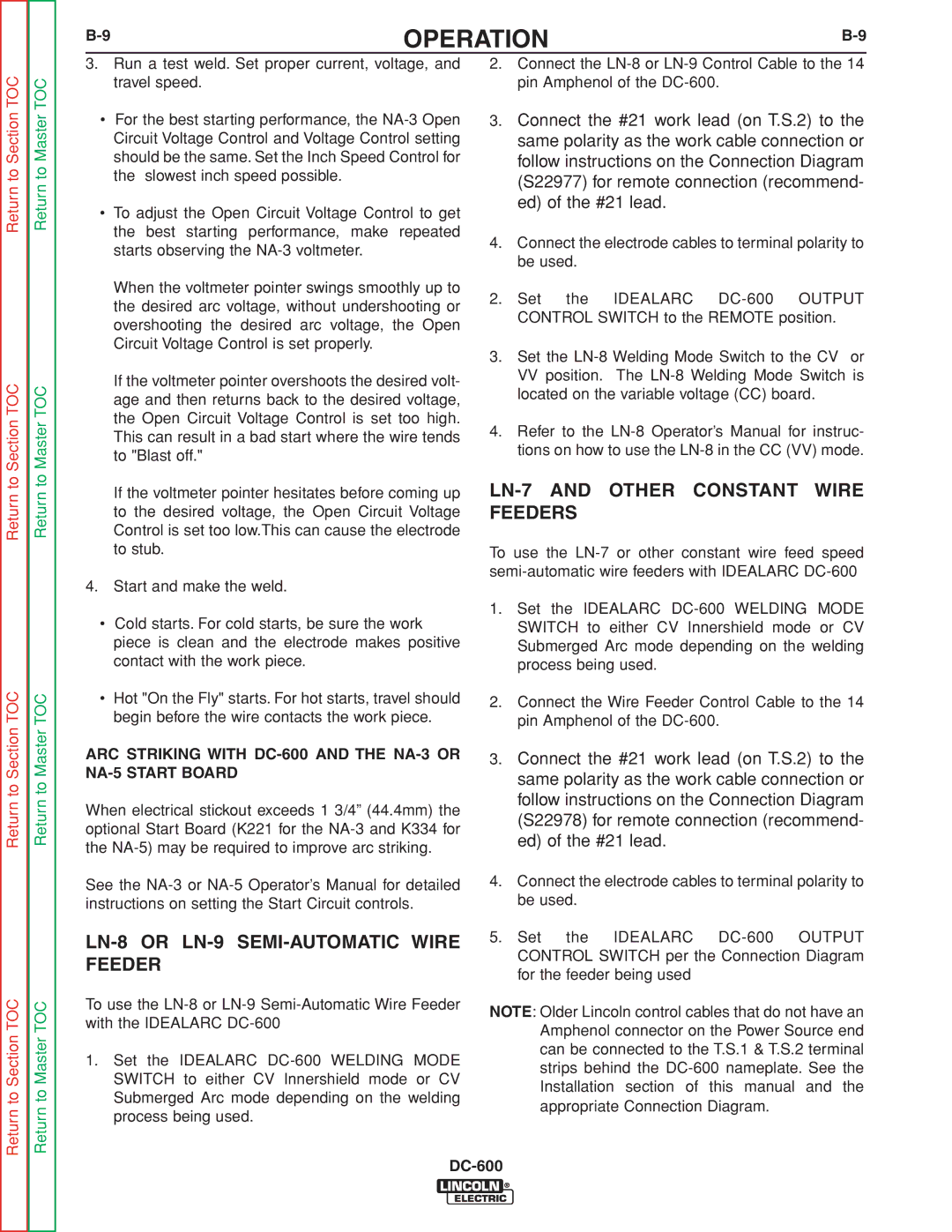
OPERATION |
Return to Section TOC
Return to Section TOC
Return to Section TOC
Return to Section TOC
Return to Master TOC
Return to Master TOC
Return to Master TOC
Return to Master TOC
3.Run a test weld. Set proper current, voltage, and travel speed.
•For the best starting performance, the
•To adjust the Open Circuit Voltage Control to get the best starting performance, make repeated starts observing the
When the voltmeter pointer swings smoothly up to the desired arc voltage, without undershooting or overshooting the desired arc voltage, the Open Circuit Voltage Control is set properly.
If the voltmeter pointer overshoots the desired volt- age and then returns back to the desired voltage, the Open Circuit Voltage Control is set too high. This can result in a bad start where the wire tends to "Blast off."
If the voltmeter pointer hesitates before coming up to the desired voltage, the Open Circuit Voltage Control is set too low.This can cause the electrode to stub.
4.Start and make the weld.
•Cold starts. For cold starts, be sure the work piece is clean and the electrode makes positive contact with the work piece.
•Hot "On the Fly" starts. For hot starts, travel should begin before the wire contacts the work piece.
ARC STRIKING WITH DC-600 AND THE NA-3 OR NA-5 START BOARD
When electrical stickout exceeds 1 3/4” (44.4mm) the optional Start Board (K221 for the
See the
LN-8 OR LN-9 SEMI-AUTOMATIC WIRE FEEDER
To use the
1.Set the IDEALARC
2.Connect the
3.Connect the #21 work lead (on T.S.2) to the same polarity as the work cable connection or follow instructions on the Connection Diagram (S22977) for remote connection (recommend- ed) of the #21 lead.
4.Connect the electrode cables to terminal polarity to be used.
2.Set the IDEALARC
3.Set the
4.Refer to the
LN-7 AND OTHER CONSTANT WIRE FEEDERS
To use the
1.Set the IDEALARC
2.Connect the Wire Feeder Control Cable to the 14 pin Amphenol of the
3.Connect the #21 work lead (on T.S.2) to the same polarity as the work cable connection or follow instructions on the Connection Diagram (S22978) for remote connection (recommend- ed) of the #21 lead.
4.Connect the electrode cables to terminal polarity to be used.
5.Set the IDEALARC
NOTE: Older Lincoln control cables that do not have an Amphenol connector on the Power Source end can be connected to the T.S.1 & T.S.2 terminal strips behind the
